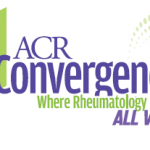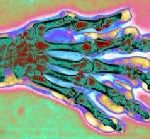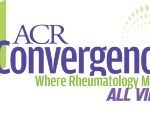In light of the release of the ACR’s new gout guideline, it’s not surprising that 50 abstracts of studies on various aspects of gout were accepted at ACR Convergence 2020. Here, we highlight just a few:

Subcategories:Clinical Criteria/GuidelinesEthicsLegal UpdatesLegislation & AdvocacyMeeting ReportsResearch Rheum
The ACR/CHEST ILD Guidelines in Practice, a video
In collaboration with the American College of Chest Physicians, the ACR released two new comprehensive guidelines aimed at improving the screening, monitoring, and treatment of patients with interstitial lung disease (ILD) secondary to systemic autoimmune rheumatic diseases (SARDs). Recently, Sindhu R. Johnson, MD, PhD, professor of medicine at the University of Toronto, Canada, director of the Toronto Scleroderma Program and principal investigator for the guideline, and Elana J. Bernstein, MD, MSc, Florence Irving associate professor of medicine in the Division of Rheumatology at Columbia University, New York City, and co-first author, presented a webinar to talk about how the guidelines were developed and present some of the recommendations and their rationale: Watch the recording now!

In light of the release of the ACR’s new gout guideline, it’s not surprising that 50 abstracts of studies on various aspects of gout were accepted at ACR Convergence 2020. Here, we highlight just a few:

Early results in a phase 2 trial are finding that adding a TNF blocker to other treatment could greatly lower the risk of serious complications during pregnancy for women who have antiphospholipid syndrome with lupus anticoagulant.

From pain management to arthroplasty, African American patients with OA and RA experience worse outcomes than white patients. But the reasons for these health disparities are difficult to parse from socioeconomic and cultural factors.

ACR Convergence 2020—In May 2020, the ACR published its updated guideline for the management of gout.1 It followed on the heels of a 2017 gout guideline published by the American College of Physicians.2 Although the guidelines provide similar recommendations on the treatment of acute gout, they differ importantly in the use of uric acid-lowering therapy…

The desire for safety during the COVID-19 pandemic has forced rheumatology fellowship programs to embrace virtual platforms. Here are some insights into how this change has affected recruitment in 2020.
ACR CONVERGENCE 2020—The definition of cell type depends increasingly on a cell’s molecular features. On Friday, Nov. 6, 2020, Alex Kuo, PhD, senior scientist at Stanford University School of Medicine, Stanford, Calif., described six technologies that are relatively mature and can be used for rheumatic disease research: Rapidly developing single-cell RNA sequencing (scRNA-seq); Cellular indexing…

Roberto Caricchio, MD, discusses what trials of repurposed rheumatology drugs to treat COVID-19 cytokine storm have shown so far.

Certain nutrients or dietary patterns may affect inflammation and rheumatic disease risk in certain populations. Recommended nutrients include omega-3 fatty acids found in fish, poultry or nuts. Following a Mediterranean or standard Western diet may affect RA risk too.

ACR CONVERGENCE 2020—Recent research findings suggest rheumatologists need to take a closer look at two gold standard autoantibodies used to diagnose seropositive rheumatoid arthritis (RA)—rheumatoid factor (RF) and anti-cyclic citrullinated peptide (anti-CCP), according to Caroline Grönwall, PhD, and Miriam Shelef, MD, PhD, who discussed Antibodies in RA: Beyond Citrullination & Back to Rheumatoid Factor at…

Experts say progress is being made on a variety of fronts in lupus nephritis. New data, for instance, shows that repeat biopsy beyond that used for diagnosis can help guide treatment and greatly reduce the flare rate. New treatments – including belimumab and the calcineurin inhibitors tacrolimus and voclosporin — have yielded improved response rates in LN…